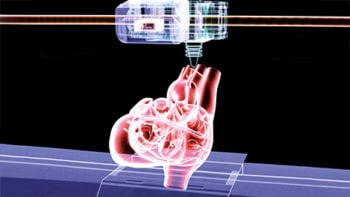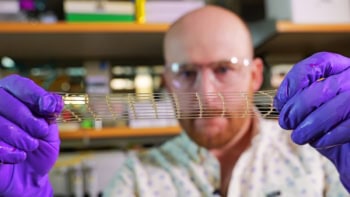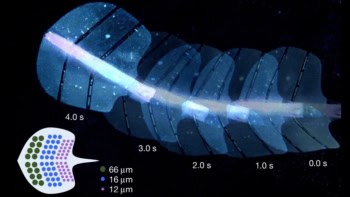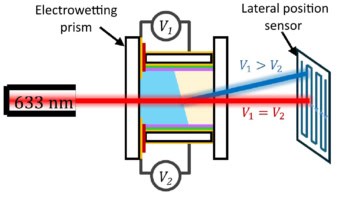A new cryogenic 3D printing technique could one day enable fabrication of off-the-shelf artificial muscle fibres, according to research published in Advanced Materials.
Printing synthetic tissue that mimics the structure of muscle remains a major challenge in tissue engineering. Muscle fibres are anisotropic, meaning that their physical properties, including the ability to transmit mechanical forces, are direction dependent. Introducing a temperature gradient during the fabrication process, from sub-zero temperatures upwards, is a simple way of creating tissue scaffolds with anisotropic microscale pores. However, the freezing process is harmful to cells encapsulated within the scaffold.
Enter cryobioprinting: an all-in-one fabrication and preservation technique developed by scientists at Brigham and Women’s Hospital and Harvard Medical School. Cryobioprinting combines a customized freezing plate with cryoprotected bioinks to produce cell-laden structures with anisotropic microchannels. The scaffolds can be stored in liquid nitrogen for several months and revived on demand, a feature that would allow pre-made products to be used in a clinical setting.
“Cryobioprinting can give bioprinted tissue an extended shelf life and allows convenient transport of tissue between sites, which is something conventional bioprinting methods do not readily enable,” says senior author Y Shrike Zhang. “[Cryobioprinting] may have broad application in tissue engineering, regenerative medicine, drug discovery and personalized therapeutics.”
Taking bioprinting to new heights
The cryobioprinting technique is an icy take on 3D extrusion bioprinting, where bioinks are printed layer-by-layer to form a tissue scaffold. Unlike traditional methods, cryobioprinting uses a temperature-controlled printing plate to print freeform structures that maintain their fidelity, even in the vertical (z) direction.
The team first explored the capabilities of the technique by printing filaments of a gelatin methacryloyl (GelMA) bioink into vertical, pillar-like structures. Each strand of GelMA freezes as it comes into contact with the frozen plate; heat transfer then occurs upwards along the z direction of the strand, creating a vertical temperature gradient within the pillars. Importantly, the lamellar ice crystals that grow along this gradient produce aligned (anisotropic) microchannels once thawed.
Using fluorescence microscopy, the researchers found that the diameter of the microchannels increased along the temperature gradient with increasing distance from the frozen plate (from 70.68 ± 15.64 µm in the bottom layer to 513.63 ± 39.88 µm in the top layer, when the plate temperature was set to –20 °C). What’s more, they determined that the scaffolds were stiffest in the direction parallel to the temperature gradient, confirming the scaffold’s anisotropic mechanical properties.
The researchers also experimented with more sophisticated freeform structures, including multi-material pillar arrays printed at a range of angles relative to the frozen plate. While the longest printable length (8.48 ± 0.25 mm) was achieved when printing perpendicular to the plate, the pillars were still printable at oblique angles close to 0° without the use of a support bath.
“The success of vertical cryobioprinting is pretty high and can work with bioinks featuring a wide range of rheological properties,” says Zhang.
Printing the muscle-tendon unit
To demonstrate the flexibility of the cryobioprinting technique, the researchers fabricated a synthetic muscle–tendon unit (MTU), a structure responsible for basic human movement.
Preliminary biological characterizations revealed that myoblasts (cells that differentiate into muscle cells) formed myotubes that aligned with the vertical microchannels on the muscle side of the muscle–tendon junction. Likewise, fibroblasts (cells that synthesize collagen, a structural protein found in connective tissues) remained functional on the tendon side. The alignments and behaviours of these cells mimicked those found in the natural MTU, suggesting that the cryobioprinted constructs could help to regulate cell activities.

Indirect 3D printing creates intricate bioscaffolds for bone and tissue regrowth
“This is the only bioprinting method so far that synergizes macroscale anisotropy (i.e. the pillars) and microscale anisotropy (i.e. the aligned microchannels) to guide cellular behaviours,” explains Zhang.
The researchers note that more in-depth characterizations are needed to understand the biological effects on the technology before it is ready for clinical translation. Nevertheless, the team is hopeful that cryobioprinted structures could one day find use in a plethora of tissue engineering applications.



